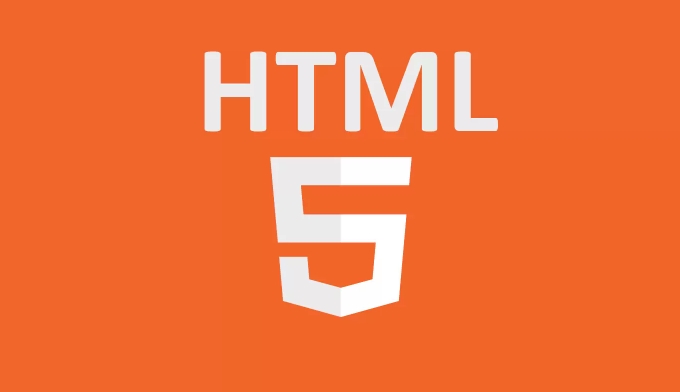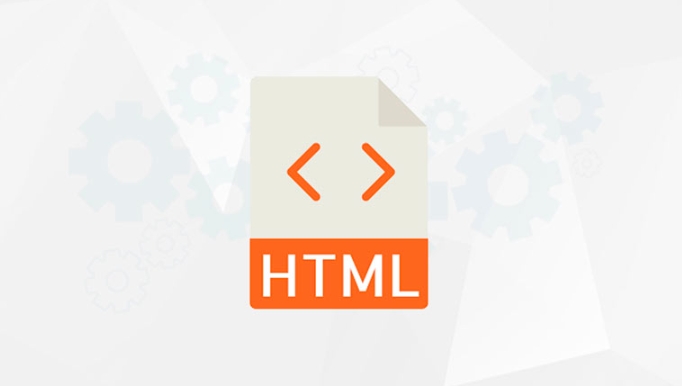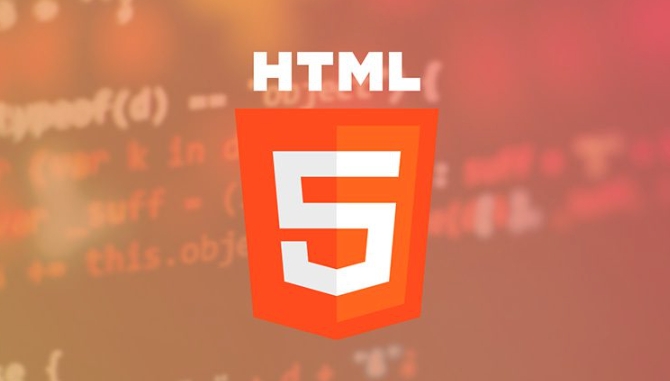The key to building email communications using HTML is compatibility and structural simplification. 1. Use table layout to replace Flexbox or Grid to ensure stable display in major mailbox clients; 2. All CSS styles need to be written inline to avoid relying on external style sheets; 3. Images should be clearly set width and add alternative text, and the buttons should be simulated with linked table cells; 4. It must be tested on multiple mailbox clients and devices, and use tools such as Litmus or Email on Acid to ensure consistent results. Following the above points can improve the compatibility and actual effect of HTML emails.

When doing email marketing, many people will directly think of using ready-made tools or platforms to design email content. But if you want higher levels of customization freedom, such as more precise control of typography, color, or responsive effects, using HTML to build email newsletters is a very practical option.

However, HTML performs well in web pages, which does not mean that it can be displayed normally in all mailbox clients. So the key point is: compatibility is preferred, simple structure, and inline style.

1. Use table layout instead of CSS Grid or Flexbox
Most modern web pages recommend using Flexbox or Grid for layout, but these technologies are not stable in HTML mail. Many mailbox clients (such as Outlook) have limited support for them.
Suggested practices:

- Use
<table> for overall layout<li> Tables can be nested, but not too complicated</li> <li> Each block uses <code><tr> and <code><td> to control the position<pre class='brush:php;toolbar:false;'> <table width="100%" cellpadding="0" cellpacing="0"> <tr> <td align="center"> <table width="600" cellpadding="20" cellpacing="0"> <tr> <td>This is the title area</td> </tr> <tr> <td>This is the main content</td> </tr> </table> </td> </tr> </table></pre><hr /><h3 id="Inline-CSS-styles-to-avoid-external-stylesheets"> 2. Inline CSS styles to avoid external stylesheets</h3><p> The mailbox client supports <code><style>tags and external CSS differently. To ensure that the style is applied correctly, the best way is to write CSS inside the tag.Operation skills:
- Use
styleattribute to define style - All fonts, colors, margins, etc. must be written on the label
- You can automatically convert CSS to inline using tools such as Mailchimp's Inline Styler
<td style="font-family: Arial, sans-serif; font-size: 16px; color: #333;"> This is a standard text. </td>
3. Pay attention to how pictures and buttons are processed
Although HTML mail supports images, some users will not load images by default. Therefore, when inserting the picture, add alternative text (alt text) and try not to let the picture bear the main information.
Suggestions about pictures:
- Image width is specified explicitly (for example
width="300") - Add
alt="How to use HTML for building email newsletters?" - Don't use background images, use the
Button processing method:
- Don't use
<button>, because many clients do not support it - Simulate buttons with links table cells
<table cellpadding="0" cellpacing="0"> <tr> <td bgcolor="#007BFF" style="padding: 12px 24px; border-radius: 4px;"> <a href="#" style="color: #fff; text-decoration: none; font-weight: bold;">Click here</a> </td> </tr> </table>
4. Test and test again
Even if you write HTML mail in accordance with best practices, you must test it on multiple mailbox clients (Gmail, Outlook, Apple Mail, etc.) and on devices.
Test suggestions:
- Use professional tools like Litmus or Email on Acid
- Send it to yourself to preview different email accounts
- Check whether there are any problems such as misalignment, font exceptions, and pictures not loading
Basically that's it. HTML mail development is not as modern as web pages, but it is still very effective as long as you pay more attention to structure, style, and compatibility.
- Use
The above is the detailed content of How to use HTML for building email newsletters?. For more information, please follow other related articles on the PHP Chinese website!

Hot AI Tools

Undress AI Tool
Undress images for free

Undresser.AI Undress
AI-powered app for creating realistic nude photos

AI Clothes Remover
Online AI tool for removing clothes from photos.

Clothoff.io
AI clothes remover

Video Face Swap
Swap faces in any video effortlessly with our completely free AI face swap tool!

Hot Article

Hot Tools

Notepad++7.3.1
Easy-to-use and free code editor

SublimeText3 Chinese version
Chinese version, very easy to use

Zend Studio 13.0.1
Powerful PHP integrated development environment

Dreamweaver CS6
Visual web development tools

SublimeText3 Mac version
God-level code editing software (SublimeText3)

Hot Topics
 Applying Semantic Structure with article, section, and aside in HTML
Jul 05, 2025 am 02:03 AM
Applying Semantic Structure with article, section, and aside in HTML
Jul 05, 2025 am 02:03 AM
The rational use of semantic tags in HTML can improve page structure clarity, accessibility and SEO effects. 1. Used for independent content blocks, such as blog posts or comments, it must be self-contained; 2. Used for classification related content, usually including titles, and is suitable for different modules of the page; 3. Used for auxiliary information related to the main content but not core, such as sidebar recommendations or author profiles. In actual development, labels should be combined and other, avoid excessive nesting, keep the structure simple, and verify the rationality of the structure through developer tools.
 What are the essential HTML elements for structuring a webpage?
Jul 03, 2025 am 02:34 AM
What are the essential HTML elements for structuring a webpage?
Jul 03, 2025 am 02:34 AM
The web page structure needs to be supported by core HTML elements. 1. The overall structure of the page is composed of , , which is the root element, which stores meta information and displays the content; 2. The content organization relies on title (-), paragraph () and block tags (such as ,) to improve organizational structure and SEO; 3. Navigation is implemented through and implemented, commonly used organizations are linked and supplemented with aria-current attribute to enhance accessibility; 4. Form interaction involves , , and , to ensure the complete user input and submission functions. Proper use of these elements can improve page clarity, maintenance and search engine optimization.
 Implementing client-side form validation using HTML attributes.
Jul 03, 2025 am 02:31 AM
Implementing client-side form validation using HTML attributes.
Jul 03, 2025 am 02:31 AM
Client-sideformvalidationcanbedonewithoutJavaScriptbyusingHTMLattributes.1)Userequiredtoenforcemandatoryfields.2)ValidateemailsandURLswithtypeattributeslikeemailorurl,orusepatternwithregexforcustomformats.3)Limitvaluesusingmin,max,minlength,andmaxlen
 Implementing Clickable Buttons Using the HTML button Element
Jul 07, 2025 am 02:31 AM
Implementing Clickable Buttons Using the HTML button Element
Jul 07, 2025 am 02:31 AM
To use HTML button elements to achieve clickable buttons, you must first master its basic usage and common precautions. 1. Create buttons with tags and define behaviors through type attributes (such as button, submit, reset), which is submitted by default; 2. Add interactive functions through JavaScript, which can be written inline or bind event listeners through ID to improve maintenance; 3. Use CSS to customize styles, including background color, border, rounded corners and hover/active status effects to enhance user experience; 4. Pay attention to common problems: make sure that the disabled attribute is not enabled, JS events are correctly bound, layout occlusion, and use the help of developer tools to troubleshoot exceptions. Master this
 What are self-closing tags in HTML?
Jul 02, 2025 pm 02:55 PM
What are self-closing tags in HTML?
Jul 02, 2025 pm 02:55 PM
Self-closing tags are elements in HTML that do not require closed tags because they do not contain content. Common examples include: ① Insert pictures; ② Add line breaks; ③ Create horizontal lines; ④ Define form input; ⑤ Link external resources; ⑥ Provide metadata. These tags work through attributes such as or. There are two correct ways to write: standard HTML syntax, such as XHTML style, but HTML5 recommends the former. Note that you cannot use self-closed form on labels that require the package content. If the error is wrong, it should be changed to a correctly closed Hello. Proper use of self-closing tags helps keep your code simple and efficient, and improves compatibility with other tools such as frameworks.
 How to group options within a select dropdown using html?
Jul 04, 2025 am 03:16 AM
How to group options within a select dropdown using html?
Jul 04, 2025 am 03:16 AM
Use tags in HTML to group options in the drop-down menu. The specific method is to wrap a group of elements and define the group name through the label attribute, such as: 1. Contains options such as apples, bananas, oranges, etc.; 2. Contains options such as carrots, broccoli, etc.; 3. Each is an independent group, and the options within the group are automatically indented. Notes include: ① No nesting is supported; ② The entire group can be disabled through the disabled attribute; ③ The style is restricted and needs to be beautified in combination with CSS or third-party libraries; plug-ins such as Select2 can be used to enhance functions.
 Adding captions and tracks to HTML video and audio elements.
Jul 02, 2025 pm 04:05 PM
Adding captions and tracks to HTML video and audio elements.
Jul 02, 2025 pm 04:05 PM
To embed video or audio with subtitles and audio tracks into a web page, it can be achieved through HTML native functionality. 1. Use tags to add subtitles files in WebVTT format and set the kind, srclang and label attributes; 2. Support multi-language subtitles through multiple elements, and use the default attribute to set the default language; 3. Multi-tracks can control multiple element switching through JavaScript, or use more complex media extension solutions; 4. Pay attention to browser compatibility, path configuration and format verification to ensure normal operation on different devices and provide backup solutions.
 Debugging common HTML validation errors.
Jul 03, 2025 am 02:41 AM
Debugging common HTML validation errors.
Jul 03, 2025 am 02:41 AM
When encountering HTML verification errors, you must first clarify the problem and correct it according to the specifications. 1. When the required attributes are missing, the src and alt and a href of img should be completed; 2. When the tag nesting is incorrect, the structure should be clarified and the tags should be closed correctly to avoid confusion in nesting block-level elements; 3. When using invalid or discarded tags, you should refer to the MDN document to replace it with modern writing methods, such as replacing center and font with CSS; 4. When character encoding problems, add metacharset="UTF-8" and ensure that the file is saved in UTF-8 format to solve it.






